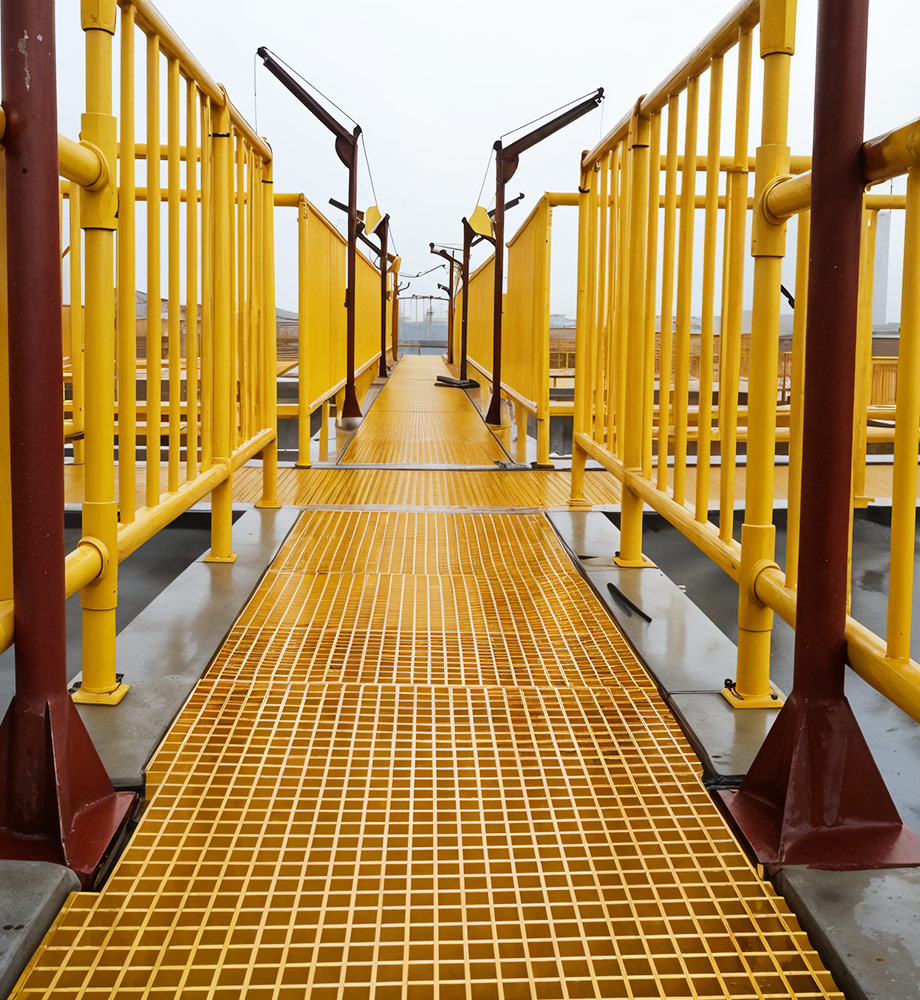Key Features
- Modular fiberglass grating panels or plate flooring; FRP angle and channel support beams; integrated handrails; pre-engineered fasteners and anchors. Corrosion-resistant U-bolts and nuts.
Benefits
- Rapid installation (bolt-together sections) with ordinary tools. Eliminates costly painting or galvanizing. Platforms remain stable and safe over time — no “squeaks” or warps. Panels are non-slip and fire-safe. Lower maintenance means higher uptime compared to metal structures.
Applications
- Access platforms in chemical plants, elevated walkways in wastewater treatment, offshore oil platforms, telescope service bridges, petroleum refinery catwalks, cooling tower walkways, and transit station mezzanines. Also pedestrian bridges and nature trail boardwalks (where weathering is an issue).
Technical Specifications
- Designed per OSHA or local codes for live loads (often 100–125 psf plus equipment loads). Handrail heights typically 42″; OSHA guardrail loads. Composite properties mean FRP walkways can be engineered for any span or load (with 10:1 factor of safety). Many designs use pultruded treads and stringers.
Unique Selling Points (USPs)
- Entire walkway assemblies can be pre-cut and staged for fast onsite assembly. FRP platforms offer much higher corrosion resistance than steel gratings, allowing use in chloride, acid or marine environments without rust pits. The composite construction also provides excellent insulating properties (no heat bridges, no lightning risk).

